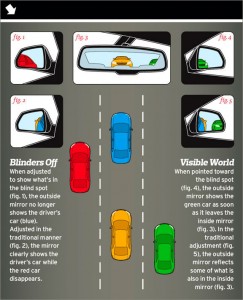As Sophie gets older we’re naturally expecting her to do more chores. She already cleans her own room and now also makes her own bed, does homework every night, and helps out around the house with tasks appropriate for her age. We’ve started seeing “Job Chart” or “Chore Chart” systems to help organize and reward these responsibilities, and so far they’re shockingly harmful ideas.
My Job Chart is the ultimate example, using high technology to solve the problem. Parents assign tasks via a website and award points for each task completed successfully. Children can then redeem those points through the website for parent-approved Amazon purchases, in-home treats, or family activities. This is a particularly advanced approach, but is structurally similar to what’s been done on paper for years: list the chores to be completed and list the rewards available for a job well done.
The entire idea (whether on paper or online) is fundamentally flawed.
First, individually rewarding specific behaviors encourages children to seek a reward for every behavior. Why help put away the Christmas decorations if the job doesn’t pay well enough? Plus, if each chore carries a reward, they all seem optional (“I don’t want a new toy this week so I won’t clean my room.”)
Second, much good behavior that deserves a reward doesn’t belong on a checklist. I recently saw a child Sophie’s age throw himself to the sidewalk screaming that he couldn’t get dinner from his favorite restaurant. I’m glad my daughter doesn’t behave that way (and told her so), but I would never have put “don’t throw a tantrum” on a checklist.
Finally, material rewards are… well, materialistic. Many systems encourage using “family rewards” instead — “spend time with Dad” and “read a bedtime story together” are popular suggestions — but that idea should be downright horrifying. We’re suggesting bedtime stories are conditional? If the child doesn’t finish her homework she doesn’t get time with Dad? “Sorry, honey; I can’t love you today. But if you clean your room tomorrow I’ll be able to love you for 30 whole minutes!” Worst of all, if both monetary and non-monetary rewards are available, the child can put a price on priceless activities. When twenty “points” buys either a $5 toy or a fun day with Dad, could she also buy an extra Dad day with $5 of her allowance? Would I have to charge extra for hugs?
These limitations do not translate to adulthood. We get rewards constantly (paychecks not least among them) but never with an itemized receipt for our behaviors. If I fail to vacuum the living room my wife will not automatically refuse to put away the dishes. If I do only the tasks assigned to me at work and never offer my own ideas I will be passed up for promotions and may even lose my job to a more “motivated” employee. Why would we create an artificial environment for our children that teaches them skills they can’t use as they mature?
Adults’ responsibilities are mandatory. We suffer consequences (e.g., unemployment or spousal fights) when we disregard them. Moreover, though, we expect the rewards we get. I did not earn the privilege of my wife cooking dinner yesterday, or any particular dollar of my paycheck last month.
We should offer the same expectations to our children for their own responsibilities. Sophie must clean her room; if she doesn’t, we’ll dispose of the mess. If she doesn’t eat a healthy dinner her supply of treats will run dry in a hurry. But bedtime stories are an every night event, and she gets “time with Dad” whenever either of us asks for it (not to mention “time with Mom” which doesn’t even make the cut for recommended Chore Chart rewards).
Let’s do our kids a favor and eliminate “Chore Charts” from the world.

